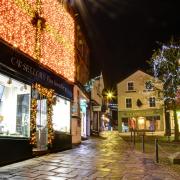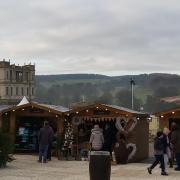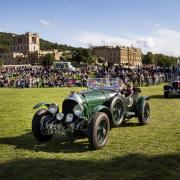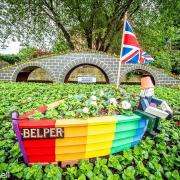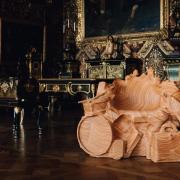175 years ago Thomas Cook organised his first excursion, beginning the age of ‘popular tourism’ that grew into today’s worldwide travel industry

One hundred and seventy five years ago on 5th July 1841 the travel pioneer Thomas Cook organised his first railway excursion. The trip began the age of ‘popular tourism’ that grew into today’s worldwide travel industry. The anniversary is especially noteworthy here, for ‘Mr Cook’ was a Derbyshire man.
Thomas Cook was born on 22nd November 1808 at 9 Quick Close, Melbourne, a modest labourer’s cottage demolished in 1967. He was just four when his father John died. His mother Elizabeth – daughter of Baptist preacher Thomas Perkins – quickly remarried and had two more children. But the stepfather died seven years later, prompting ten-year-old Thomas to leave school to help support the family.
He began as a gardener’s lad at Melbourne Hall earning 1d a day – then entered the employ of market gardener John Robey for sixpence a week. There he became self-reliant quickly, for Robey was ‘often the worse for drink’ and left young Thomas to cry his wares around the nearby villages or to sell fruit and vegetables at Derby Market.
Tiring of this, in 1822 at the age of 14 Thomas secured an apprenticeship as cabinet-maker with John Pegg. Imbued with the work ethic of a stern religious upbringing Thomas did well and might have made furniture his life’s work but for ‘seeing the light’ after his coming-of-age baptism in 1826.

The 18-year-old embraced religion fervently, turning roving preacher around the villages of Derbyshire and Leicestershire. His diary recorded that in 1829 alone he covered 2,692 miles mainly on foot. With kindred spirit John Earp he also printed religious literature and promotional material. Here was the earliest hint of Cook’s world travel empire.
Thomas left Melbourne permanently at the age of 20 – after a spell as a printer’s assistant in Loughborough he settled in Market Harborough. On New Year’s Day 1833 he took the ‘Temperance Pledge’ and two months later married Marianne Mason. Two children followed – John Mason Cook and a daughter Annie Elizabeth. The couple set up home near the workshop where Thomas had now started a woodworking business – evangelism alone failed to pay the bills. Nevertheless ‘The Pledge’ changed Cook’s destiny. For it was through his zealous organisation of Temperance outings that his flair for bespoke ‘trips’ emerged – a sobering irony considering how holidays and liquid refreshment have become entwined.
On 5th July 1841 Cook ran the trip which became enshrined as the beginning of the modern ‘tourist industry’. He recorded his inspiration: ‘From my residence at Market Harborough I walked 15 miles to Leicester to attend a meeting and a thought flashed through my brain. What a glorious thing it would be if the newly developed powers of railways could be made subservient to the promotion of Temperance.’
The day after the Leicester meeting he approached John Fox Bell, resident secretary of Midland Counties Railway, who agreed to hire Thomas a train for his next Temperance gathering. Although not the world’s first rail excursion, it was the first chartered trip available to the general public which had been extensively advertised and promoted. As such Cook’s inaugural outing began the phenomenon later dubbed the ‘package tour’.

The ‘special train’ took 507 passengers 11 miles from Leicester to Loughborough at one shilling per head return, the entire itinerary conceived by ‘Mr Cook’. The trip included a Temperance prayer meeting and attendant festivities in a leafy park – a summer gala, band concert and cricket match – but strictly no alcohol! A staunch contingent from Derby hailed their dry jaunt with a cheery banner proclaiming ‘DO NOT TAKE WINE NOR STRONG DRINK’. More trips soon followed – on 22nd June 1842 an outing to Matlock included a train to Ambergate thence a boat along the Cromford Canal. But as yet Thomas had no pretensions to make travel his full-time occupation. He gave up his woodworking business and moved to Leicester where he set up as a printer – uppermost in his mind was that this business would facilitate his promotion of Temperance and other worthy causes.
But almost imperceptibly the Temperance excursions evolved into pleasure trips. And Cook generally travelled with his passengers to ensure their comfort – a new innovation. In 1845 – four years after his fledgling venture – Cook organised a longer trip from Leicester to Liverpool including a steamer excursion through the Menai Straits to Caernarvon. In all but name a holiday and pleasure cruise.
In August 1848 Cook arranged with particular satisfaction for nine horse-drawn carriages to convey 109 ‘mostly ladies’ to the gardens of Melbourne Hall. The day also included the obligatory prayer meeting and Temperance talk – Cook gamely battling to adhere to his primary cause of his clients’ ‘betterment’.
But 1851 brought a turning point when his seventeen-year-old son John Mason Cook entered the business. John’s youthful ethos was far more direct and aggressive – the provision of ‘pleasure for profit’.

That same year also proved significant in an even bigger way when a chance encounter with another Derbyshire worthy – the celebrated ‘Chatsworth gardener’ Joseph Paxton – launched Thomas Cook & Son full tilt into what Victorians grandly christened ‘the Business of Travel’.
In 1850 Thomas was en route to Liverpool to negotiate shipping terms for a possible American tour when he changed trains at Derby. There he bumped into his acquaintance John Ellis – Chairman of the Derby-based Midland Railway Company. With him was Midland director Joseph Paxton. Conversation turned to the upcoming International Exhibition of 1851 to be held in London at the Paxton-designed Crystal Palace. The Midland Railway was planning trips – Ellis and Paxton decided on the spot that Thomas Cook would deliver them.
Cook acquiesced primarily because he liked the idea of ‘ordinary folk’ from the provinces being educated in the affairs of the wider world. But with his son’s energetic input the exercise proved financially-rewarding. During the five months the Great Exhibition ran, Cook’s took 165,000 ‘trippers’ to London. Many enjoyed something rather stronger than a cup of tea.
The Great Exhibition trips marked a turning point in the ‘travel industry’ – the effective beginning of ‘mass tourism’ – spawned on Derby Station by two men with indelible Derbyshire connections. Thereafter Thomas Cook and Son expanded rapidly and a long and close relationship was forged with the Midland Railway. In 1854 Thomas gave up his printing business to further his travel operation.

It was opportune too that the exotic exhibits at the Crystal Palace fuelled a real public interest in what lay beyond home shores. Never had so many been so aware of how big the world was but how small it could become.
Cook’s introduced more far-flung destinations. Their first European tour took in the 1855 Paris Exhibition. In 1863 an intrepid party of ladies journeyed to the glaciers of Switzerland. America followed in 1865 and in 1869 Thomas fulfilled an ambition to take a group to the Holy Land. India and the Far East followed – Cook’s conquered the globe and became an institution.
The firm’s success was immense – with countless offices and agencies all over the world the very utterance ‘Cook’s’ became a passport to everything the discerning traveller required. In 1890 the firm sold 3.25 million tickets – Thomas then aged 82 and taking a back seat.
But thereby hangs a sad tale – for his withdrawal had been forced upon him. The gulf in approach between father and son had widened to a family rift that emerged in the 1870s. Thomas felt pushed out by the next generation and relinquished control under pressure – John Cook became sole manager of the firm in 1878 and granted his father only a fixed annual pension.
Although Thomas continued to travel he renewed his zeal in spreading the Temperance gospel – he also gave generously to charitable causes and garnered a reputation as a champion of the poor. But his twilight years were troubled. In 1880 his daughter Annie Elizabeth was accidentally asphyxiated in her bath at the family home in Leicester. In 1884 his wife Marianne died after a long illness. And by now Cook was slowly going blind.
He became more nostalgic for his youthful past. In 1874 he had applied for the tenancy of vacant Melbourne Hall but was refused for fear that he would ‘make it a pleasure ground’. Cook felt so aggrieved by the accusation that he used the press to assert that his sole desire was to ‘live quietly in Melbourne’ then ‘rest eternal in my native soil’.
Having travelled so far he failed to achieve that final step. He died at his Leicester home ‘Thorncroft’ on 18th July 1892 aged 83 and was buried in the town’s Welford Road Cemetery.
But he did leave a legacy to Melbourne – the handsome row of Memorial Cottages in High Street which he built in 1891 for ‘poor and deserving persons’. Several plaques there also record his achievements – but all with a quiet modesty befitting his character. Yet the press once labelled Thomas Cook ‘the most famous man in the world’. With respectful permission we’ll drink to that.










